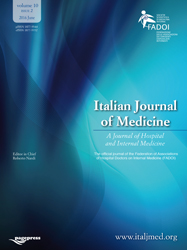The clinical value of fibrinogen and thromboelastography in the predictive assessment of the progression of persistent postpartum hemorrhage
All claims expressed in this article are solely those of the authors and do not necessarily represent those of their affiliated organizations, or those of the publisher, the editors and the reviewers. Any product that may be evaluated in this article or claim that may be made by its manufacturer is not guaranteed or endorsed by the publisher.
Authors
This study aims to explore the value of fibrinogen (FIB) and thromboelastography in evaluating persistent postpartum hemorrhage. A total of 130 parturients were divided into the control group (non-persistent postpartum hemorrhage, n=83) and the observation group (persistent postpartum hemorrhage, n=47), and the observation group was further divided into the mild bleeding group (n=30) and the severe bleeding group (n=17). FIB and D-dimer (D-D) were measured by an automatic coagulation analyzer, and the coagulation reaction time and coagulation time were measured by thromboelastography. FIB was decreased, while D-D levels, R value, and K value were increased in the observation group and the severe bleeding group (p<0.05). FIB was negatively correlated with the R and K values (r=-0.957, -0.921), while D-D was positively correlated with them (r=0.943, 0.968). Receiver operating characteristic curve analysis showed that the areas under the curve of FIB, D-D, R value, and K value were 0.861, 0.892, 0.943, and 0.976, respectively (p<0.05). FIB and thromboelastography parameters are related to the severity of persistent postpartum hemorrhage.
How to Cite

This work is licensed under a Creative Commons Attribution-NonCommercial 4.0 International License.
PAGEPress has chosen to apply the Creative Commons Attribution NonCommercial 4.0 International License (CC BY-NC 4.0) to all manuscripts to be published.






